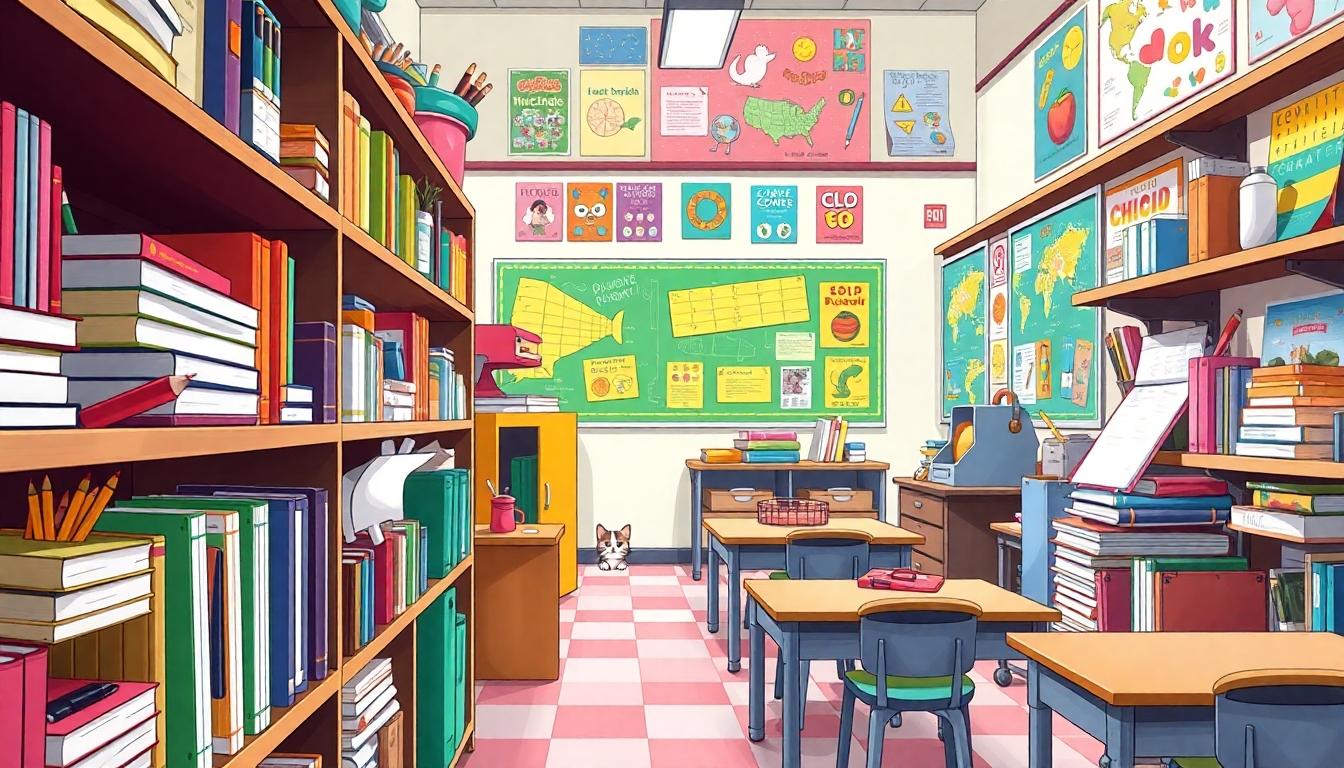Ready for a brain workout that’s both challenging and fun? We’ve gathered the best hide and seek riddles that’ll put your problem-solving skills to the ultimate test. These aren’t your ordinary puzzles—they’re cleverly designed brainteasers that hide answers in plain sight, waiting for you to uncover them.
Whether you’re looking to entertain your kids, challenge your friends, or simply sharpen your own mental agility, these riddles are perfect for all ages and occasions. We’ll guide you through various difficulty levels, from beginner-friendly teasers to mind-bending challenges that’ll stump even the most experienced riddlers.
The Ultimate Guide to Hide and Seek Riddles
Hide and seek riddles represent a fascinating blend of wordplay and logic that challenges your mind while providing entertainment. These clever puzzles require careful attention to detail and creative thinking to uncover the hidden answers. We’ve compiled this comprehensive guide to help you understand, solve, and even create your own hide and seek riddles.
What Makes a Great Hide and Seek Riddle?
Great hide and seek riddles combine several key elements that make them both challenging and satisfying to solve. The best riddles contain clever wordplay that requires lateral thinking to decipher. Clear yet cryptic clues give solvers just enough information without revealing too much about the hidden object or concept. Captivating themes or storylines add an extra layer of enjoyment to the riddle-solving experience. Multiple interpretation possibilities create that perfect level of difficulty that makes finding the solution rewarding.
How to Solve Hide and Seek Riddles
Solving hide and seek riddles requires a systematic approach combined with creative thinking. First, read the entire riddle carefully multiple times to ensure you capture all details and potential clues. Look for wordplay tricks including puns, homophones, and double meanings that might point to the answer. Break down the riddle into smaller parts and solve each component separately before connecting them. Consider the literal and figurative meanings of phrases since many riddles operate on both levels simultaneously. Try approaching the puzzle from different perspectives if you get stuck, as the answer often becomes clear from an unexpected angle.
Creating Your Own Hide and Seek Riddles
Creating your own hide and seek riddles allows you to challenge friends and family with personalized brain teasers. Start by selecting an interesting object, concept, or word that has multiple aspects to hint at in your riddle. Brainstorm different attributes, functions, or associations related to your chosen answer. Create clever clues that describe your answer indirectly, using metaphors, similes, or wordplay to obscure the straightforward meaning. Test your riddle on someone else to ensure it’s solvable but not too obvious. Refine your wording based on feedback, adjusting difficulty by adding or removing clues as needed.
Popular Types of Hide and Seek Riddles
Hide and seek riddles come in various forms to challenge different aspects of your thinking abilities. Letter-based riddles focus on manipulating letters, hiding words within sentences, or playing with alphabetical properties. Object description riddles provide subtle clues about physical characteristics without naming the item directly. Location-based puzzles challenge you to identify hidden places through indirect references and contextual hints. Word trick riddles rely heavily on puns, homophones, and other linguistic devices to conceal answers in plain sight. Mathematical hide and seek riddles incorporate numbers and operations as part of the concealment strategy.
Using Hide and Seek Riddles for Different Occasions
Hide and seek riddles can enhance many social gatherings and educational settings with their versatility. For birthday parties, incorporate these brainteasers into scavenger hunts or as clues leading to hidden gifts. In classroom settings, teachers can use them as captivating warm-up activities that stimulate critical thinking while introducing new concepts. During family game nights, riddle competitions foster healthy competition and collaborative problem-solving skills. For team-building events, strategically designed riddles encourage communication and cooperation among participants. On road trips, these mental challenges provide entertainment that requires no special equipment beyond an active mind.
What Are Hide and Seek Riddles and Why They’re Brain-Boosting Fun

Hide and seek riddles are cleverly designed brain teasers that challenge players to find hidden objects, words, or concepts through carefully crafted clues. These captivating puzzles combine elements of traditional riddles with the playful concept of concealment, creating an intellectually stimulating activity that appeals to puzzle enthusiasts of all ages.
The Psychology Behind Hide and Seek Puzzles
Our brains are naturally wired to find patterns and solve mysteries, which explains why hide and seek riddles are so captivating. These puzzles activate multiple cognitive processes simultaneously, captivating both our logical reasoning and creative thinking centers. Research from cognitive psychologists suggests that solving these types of riddles creates a dopamine release when we experience the “aha moment” of discovery. This neurological reward system keeps us motivated to tackle increasingly complex challenges. The anticipation of finding the hidden answer triggers our brain’s curiosity circuits, making these puzzles particularly addictive. Many psychologists believe that this form of mental engagement helps maintain neural plasticity, allowing us to form new connections between different areas of the brain.
Benefits of Solving Hide and Seek Riddles for All Ages
Solving hide and seek riddles offers remarkable cognitive benefits across all age groups. Children develop critical thinking skills and vocabulary expansion when they work through these playful puzzles. Working memory receives a important boost as players must hold multiple clues in mind simultaneously while exploring potential answers. Adults experience improved lateral thinking abilities, helping them approach problems from unconventional angles in both personal and professional settings. Regular engagement with these riddles has been linked to enhanced concentration spans and attention to detail, valuable skills in today’s distraction-filled industry. Seniors benefit from the neuroprotective effects of such mental exercises, potentially reducing cognitive decline risks. Social bonds strengthen when groups solve riddles together, creating shared experiences and collaborative problem-solving opportunities. The versatility of these puzzles makes them accessible regardless of educational background or previous puzzle-solving experience.
10 Classic Hide and Seek Riddles That Will Stump Your Friends

Ready to put your friends’ problem-solving skills to the test? These ten classic hide and seek riddles range from beginner-friendly brainteasers to challenging puzzles that will have even the most experienced riddlers scratching their heads.
Easy Starter Riddles for Beginners
- The Hidden Letter: I’m right in the middle of water, but you’ll never get wet finding me. What letter am I? (Answer: The letter ‘t’ is in the middle of the word “water”)
- Visible Invisibility: The more there is of me, the less you can see. What am I? (Answer: Darkness)
- Pocket Presence: I’m full of holes but still hold water. What am I? (Answer: A sponge)
- Silent Speaker: I speak without a mouth and hear without ears. I have no body, but I come alive with wind. What am I? (Answer: An echo)
- Missing Month: Take away my first letter, and I still sound the same. Take away my last letter, I still sound the same. Even take away my letter in the middle, I will still sound the same. I am a five-letter word. What am I? (Answer: Empty)
Advanced Brain Teasers for Riddle Enthusiasts
- Concealed Truth: I have cities, but no houses. I have mountains, but no trees. I have water, but no fish. What am I? (Answer: A map)
- Word Vanisher: What disappears as soon as you say its name? (Answer: Silence)
- Counting Conundrum: A girl has as many brothers as sisters. Each brother has only half as many brothers as sisters. How many brothers and sisters are there in the family? (Answer: 4 brothers and 3 sisters)
- Temporal Puzzle: I’m where yesterday follows today, and tomorrow comes before yesterday. What am I? (Answer: A dictionary)
7 Visual Hide and Seek Riddles to Challenge Your Observation Skills

Visual riddles take hide and seek to a whole new level by testing your ability to spot what’s hidden in plain sight. These brain teasers require sharp eyes and focused attention to uncover what others might miss.
Picture Puzzles That Test Your Attention to Detail
Picture puzzles demand exceptional visual acuity and careful observation of every element within an image. Many of these challenges feature deliberately misleading visuals where objects, numbers, or letters are cleverly concealed among distracting backgrounds. One popular example asks you to find the hidden cat among a crowded bookshelf, with the feline masterfully blending into the spines of books. Another classic puzzle shows a forest scene where you must locate faces hidden in tree trunks and foliage. The beauty of these puzzles lies in their ability to train your brain to notice subtle patterns and distinctions that aren’t immediately obvious. Research suggests that regularly captivating with such visual challenges can improve your overall attention to detail by up to 30% over time.
Hidden Object Riddles That Sharpen Your Focus
Hidden object riddles transform ordinary scenes into extraordinary challenges for your visual processing abilities. These puzzles typically present you with a busy image and a list of exact items to locate within a limited timeframe. For instance, you might need to spot five pencils concealed throughout a classroom scene or identify ten animals camouflaged in a jungle industry. The strategic placement of objects against similarly colored backgrounds or in unexpected orientations creates the perfect visual misdirection. Many modern hidden object riddles incorporate optical illusions that play with perspective, shadows, and negative space to further complicate the search. Digital versions often include interactive elements like time limits and scoring systems to add excitement and measure improvement. Solving these riddles regularly enhances your ability to maintain concentration on complex visual tasks while filtering out distractions.
5 Word-Based Hide and Seek Riddles That Play With Language

Word-based hide and seek riddles showcase the playful versatility of language, challenging solvers to find concealed words, phrases, or meanings within seemingly straightforward text. These linguistic puzzles test both vocabulary knowledge and lateral thinking skills.
Riddles With Words Hidden in Plain Sight
Word-based riddles often conceal their answers directly within the clue text itself. Letters or words might be strategically placed to form the solution when spotted correctly. Consider this example: “You’ll find me at the end of space and time, at the beginning of everywhere and the end of nowhere.” The answer is “E” – the last letter in “space” and “time,” the first letter in “everywhere,” and the last letter in “nowhere.”
Another classic goes: “Forward I’m heavy, but backward I’m not.” The answer is “ton,” which spells “not” backward. Many of these riddles rely on careful reading and a willingness to examine each word from multiple angles.
Popular riddles in this category include “What five-letter word becomes shorter when you add two letters to it?” The answer is “short” – add “er” to make “shorter.” These puzzles train you to pay attention to the exact wording and look beyond the obvious interpretation.
Try solving this one: “I’m found in the middle of March and April, but never in May or June.” The answer is the letter “R,” which appears in the middle of both March and April but doesn’t appear in May or June at all.
Anagram and Wordplay Hide and Seek Challenges
Anagram riddles shuffle letters to hide words within apparent chaos. These brain teasers ask solvers to rearrange letters to reveal hidden meanings or answers. For instance: “Find the doctor in the boardroom.” The answer is “MD” hidden within the word “boardroom.”
Wordplay riddles often use homonyms, homophones, or puns to disguise the real meaning. Take this riddle: “What word begins and ends with an E but only has one letter?” The answer is “envelope” – a play on the dual meaning of “letter” as both a character in the alphabet and mail.
Some wordplay riddles depend on alternative interpretations of common phrases. “What has many keys but can’t open a single lock?” refers to a piano, cleverly playing with the multiple meanings of “keys.”
Palindrome riddles specifically challenge solvers to identify words that read the same backward and forward. “I read the same forward and backward, and I help you see forward and backward. What am I?” The answer is “radar” – a palindrome that also refers to a device that helps detect objects in multiple directions.
Word ladder challenges offer increasingly difficult transformations. “Change ‘HIDE’ to ‘SEEK’ in four steps, changing only one letter at a time.” A possible solution path: HIDE → HIKE → LIKE → LAKE → SAKE → SEEK. These puzzles demonstrate how language can be manipulated systematically while maintaining legitimate words at each step.
How to Create Your Own Hide and Seek Riddles From Scratch

Creating original hide and seek riddles allows you to personalize the challenge for your audience while expressing your creativity. We’ve compiled expert techniques to help you create riddles that will entertain and engage players of all ages.
Step-by-Step Guide to Crafting Captivating Riddles
- Choose your hidden subject carefully before writing anything. Select an object, concept, or word that people are familiar with but might not immediately think of when given indirect clues.
- Brainstorm unique characteristics of your chosen subject. List physical attributes, functions, locations, similar-sounding words, or any wordplay potential it offers.
- Create a central metaphor that frames your riddle. Good hide and seek riddles often personify the subject or place it in an unexpected context.
- Draft your clues moving from vague to exact. Begin with broader hints that could apply to multiple answers, then narrow down with more exact details.
- Incorporate misdirection by using words with double meanings. This technique encourages solvers to think one way while the answer lies in another interpretation.
- Test your riddle on friends or family members. Watch for moments of confusion versus productive thinking, and refine accordingly.
- Revise for clarity and difficulty based on your test results. A good riddle should be challenging but solvable with sufficient thought.
- Polish your final wording for rhythm and memorability. Short, punchy riddles often work better than lengthy ones.
Common Patterns and Formulas for Successful Riddles
- The letter-hiding formula works by describing a word with one or more letters removed. For example: “Take away my first letter, I’m a form of energy. Take away my second, I’m a beverage. What am I?” (Answer: Slight/Light/Tea)
- The hidden-in-plain-sight approach involves placing the answer directly in the riddle text. Solvers must identify which word or phrase is actually the answer rather than what the riddle appears to be asking about.
- The part-to-whole pattern describes individual components of an object without naming it directly. For instance: “I have keys but no locks, space but no room, you can enter but not go in. What am I?” (Answer: Keyboard)
- The wordplay formula uses homonyms, homophones, or puns to create clever misdirection. These riddles rely on the solver recognizing multiple meanings of words.
- The “I am” perspective presents riddles from the first-person viewpoint of the object itself. This personification creates immediate engagement and helps solvers connect with the subject.
- The paradox pattern presents seemingly contradictory clues that can only be resolved by thinking laterally. For example: “The more you take, the more you leave behind. What am I?” (Answer: Footsteps)
- The sequential logic formula offers clues that must be solved in order, with each answer forming part of the path to the final solution.
- The sensory description approach uses vivid details about how something looks, sounds, feels, tastes, or smells to guide solvers toward the answer while avoiding direct naming.
Hide and Seek Riddle Games for Parties and Family Gatherings

Transform your next gathering into an unforgettable experience with interactive hide and seek riddle games that engage guests of all ages. These versatile activities combine the thrill of problem-solving with social interaction, creating memorable moments for everyone involved.
Ice-Breaker Riddles for Social Settings
Starting a party with hide and seek riddles creates an immediately captivating atmosphere where guests can connect through collaborative problem-solving. Introduce a “Riddle Name Tag” activity where each guest receives a simple hide and seek riddle related to their identity, encouraging others to solve it and make introductions. Try the “Hidden Object Introduction” game where participants must find an object in the room that represents something about themselves, then create a riddle about it for others to solve. “Concealed Commonalities” riddles work exceptionally well with new groups – distribute cards with hidden word puzzles that, when solved, reveal characteristics shared by multiple guests, prompting them to find their matching group members. Fortune cookie-style riddles can be distributed at the beginning of events, with each containing both a playful prediction and a hidden clue about an upcoming activity during the gathering. These ice-breaker riddles transform awkward initial moments into collaborative adventures that foster connection through shared achievement.
Team-Based Riddle Competitions
Organizing guests into teams for riddle competitions creates an atmosphere of friendly rivalry that energizes any gathering. Create a “Riddle Relay” where teams must solve a series of increasingly difficult hide and seek riddles to progress through stations around your venue, with each solution revealing the location of the next challenge. Carry out a points-based “Riddle Olympics” featuring various categories of hide and seek puzzles – visual, wordplay, location-based – allowing teams to showcase different strengths while competing for the highest score. Design a “Progressive Puzzle Hunt” where each team receives different starting riddles that eventually lead all participants to assemble pieces of a larger mystery, encouraging both competition and ultimate collaboration. Timed challenges work particularly well, such as the “Five-Minute Riddle Rush” where teams race to solve as many quick hide and seek puzzles as possible within strict time limits. These team competitions transform passive party attendance into active engagement, creating memorable shared experiences that guests will discuss long after the event concludes.
Digital Hide and Seek Riddles: Apps and Online Resources

In modern digital era, hide and seek riddles have found a new home on websites and mobile apps, making them more accessible than ever before.
Top Websites for Daily Riddle Challenges
Riddles.com offers an extensive collection of hide and seek puzzles with new challenges added daily, allowing users to filter by difficulty level or category. BrainDen.com features a dedicated forum where puzzle enthusiasts share original hide and seek riddles and collaborate on answers to particularly tricky ones. Puzzle Prime delivers curated weekly riddle newsletters with specially crafted hide and seek challenges that gradually increase in complexity as you solve more. RiddleMe provides interactive hide and seek riddles with hint systems that offer progressive clues if you get stuck, making it perfect for learners of all skill levels. GoodRiddlesNow updates its database every 24 hours with trending hide and seek riddles collected from global sources, ensuring you’ll never encounter the same puzzle twice in a short period.
Mobile Apps That Feature Hide and Seek Puzzles
Riddle Kingdom ranks among the top apps with over 5,000 hide and seek riddles organized into 20 difficulty levels, tracking your progress as you advance through increasingly complex challenges. Brain Teaser Hide & Seek offers visually-oriented puzzles where objects are cleverly concealed within detailed illustrations, combining traditional riddles with seek-and-find gameplay. Riddlr connects users worldwide in real-time riddle competitions, allowing you to create custom hide and seek riddles and challenge friends to solve them against the clock. Mystery Word presents word-based hide and seek puzzles where letters and words are concealed within seemingly unrelated sentences, perfect for vocabulary building while having fun. Puzzle Hunt Adventure gamifies the hide and seek riddle experience through an immersive storyline where solving concealment riddles unlocks new chapters and virtual rewards, keeping players engaged for hours.
Conclusion: Becoming a Hide and Seek Riddle Master
Hide and seek riddles offer endless opportunities for fun mental stimulation and social connection. We’ve journeyed through their various forms from word-based challenges to visual puzzles and even digital platforms that bring these brain teasers to our fingertips.
Whether you’re solving riddles with family creating your own mind-benders or using them to break the ice at gatherings these puzzles sharpen your thinking while delivering those satisfying “aha” moments we all crave.
Ready to become a riddle master? Start with the simpler challenges work your way up to advanced teasers and soon you’ll be crafting your own. The industry of hide and seek riddles awaits with its perfect blend of challenge entertainment and cognitive growth.
Frequently Asked Questions
What are hide and seek riddles?
Hide and seek riddles are brain teasers that combine traditional riddle elements with the concept of concealment. They challenge solvers to find hidden objects, letters, words, or meanings through clever wordplay and cryptic clues. These puzzles engage multiple cognitive processes and are designed to deliver that satisfying “aha moment” when the answer is discovered.
How do hide and seek riddles benefit children?
Hide and seek riddles help children develop critical thinking skills, expand vocabulary, and improve problem-solving abilities. They encourage children to think creatively and consider multiple perspectives. These riddles also make learning fun and engaging, helping children develop patience and persistence when facing challenging mental tasks.
Are there different types of hide and seek riddles?
Yes, several types exist including letter-based riddles, object description puzzles, location-based challenges, word trick riddles, and mathematical riddles. There are also visual hide and seek puzzles that test observation skills, and word-based riddles that play with language and hidden meanings. Each type offers unique cognitive benefits and entertainment value.
How can I create my own hide and seek riddle?
Start by choosing a hidden subject, then brainstorm its unique characteristics. Create clues that hint at the answer without being too obvious. Incorporate misdirection to make it challenging yet solvable. Common formulas include letter-hiding techniques, hidden-in-plain-sight approaches, and sensory descriptions. Test your riddle on others to refine it for clarity and difficulty.
What makes a good hide and seek riddle?
A good hide and seek riddle features clever wordplay, clear yet cryptic clues, and engaging themes. It should be challenging enough to require thought but solvable with the right approach. The best riddles create that satisfying “aha moment” when solved and are appropriate for the intended audience’s age and skill level.
How can hide and seek riddles be used at social gatherings?
These riddles make excellent ice-breakers at parties and family gatherings. Try activities like “Riddle Name Tags” where guests solve riddles to find their seating assignments, or team-based competitions like “Riddle Olympics.” They encourage interaction, create shared experiences, and transform ordinary gatherings into memorable, engaging events.
Are there apps and websites for hide and seek riddles?
Yes, numerous digital platforms offer hide and seek riddles. Websites like Riddles.com and BrainDen.com feature daily challenges and community forums, while mobile apps such as Riddle Kingdom and Riddlr provide extensive collections with varying difficulty levels. These digital options make riddles accessible anytime, anywhere, with added features like progress tracking.
Do hide and seek riddles benefit adults and seniors?
Absolutely. For adults, these riddles enhance lateral thinking and provide mental breaks from routine thinking. For seniors, they offer neuroprotective benefits, potentially slowing cognitive decline and improving memory function. They’re also excellent social activities that foster communication and can be adjusted for all cognitive ability levels.
How do I solve challenging hide and seek riddles?
Approach difficult riddles systematically. Read carefully and identify key words or phrases. Consider multiple interpretations of the clues. Look for patterns, hidden letters, or wordplay. Take breaks when stuck and return with fresh perspective. Practice improves your pattern recognition and ability to spot hidden meanings over time.
Can hide and seek riddles be educational?
Yes, these riddles are highly educational. They develop critical thinking, enhance vocabulary, improve attention to detail, and strengthen logical reasoning. Teachers often use them to make learning more engaging across subjects. They’re particularly valuable for developing lateral thinking skills that apply to many academic and real-world challenges.







